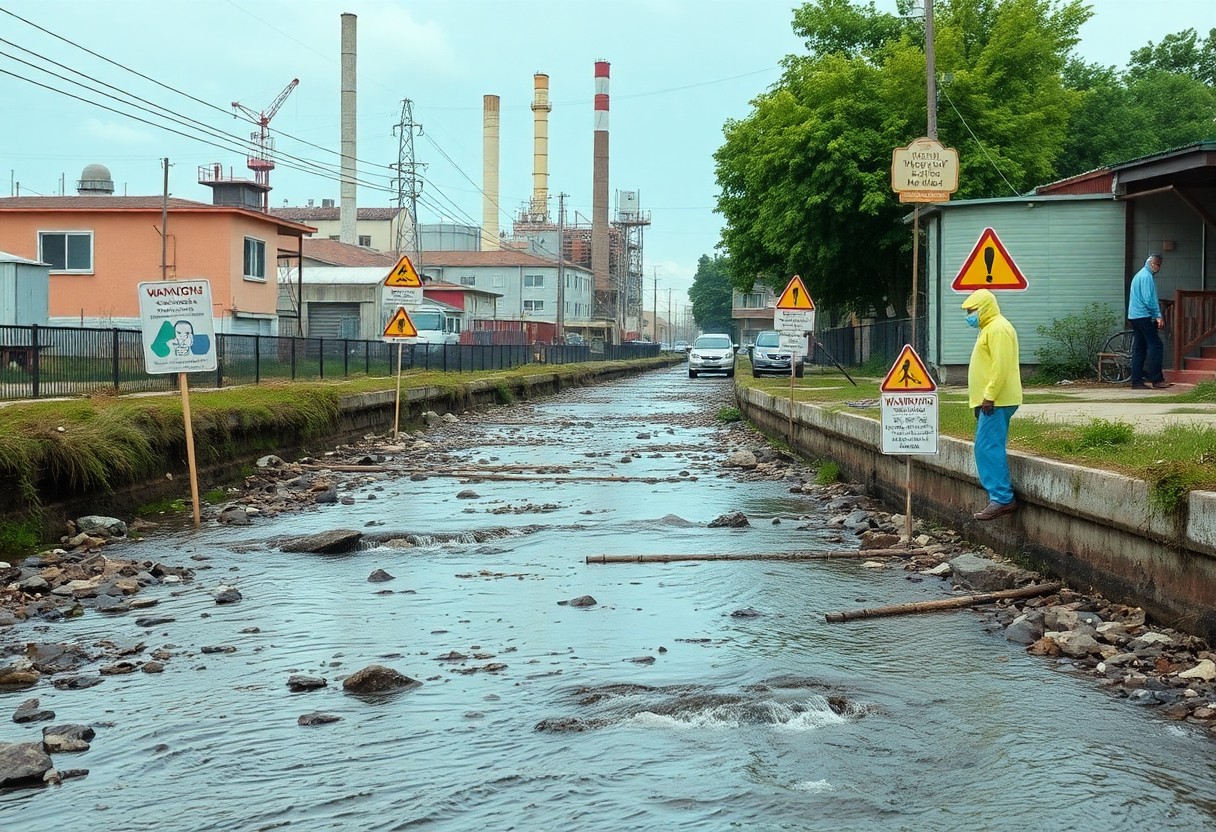There’s a rising concern surrounding PFAS (per- and polyfluoroalkyl substances), a group of chemicals linked to serious health risks, including cancer and immune system issues. As these contaminants infiltrate water supplies across the nation, you may be wondering how safe your drinking water really is. Understanding the extent of the PFAS crisis is vital, as it affects not only your health but also the well-being of your community. In this blog post, we will explore the implications of PFAS contamination and offer insights on safeguarding your water supply.

Understanding PFAS
Before dissecting the implications of PFAS on your community, it’s important to grasp what these substances are and how they behave in the environment. PFAS, or per- and polyfluoroalkyl substances, are a group of man-made chemicals used for their water- and grease-resistant properties. They have gained significant attention due to concerns over their persistence in nature and potential health impacts.
Definition and Chemical Properties
Among the myriad of synthetic chemicals, PFAS stands out due to its unique chemical properties. This class of molecules features carbon-fluorine bonds, which are among the strongest in organic chemistry, making PFAS remarkably resistant to environmental degradation. As a result, these substances can accumulate in the human body and the environment over time.
Sources of PFAS Contamination
Properties associated with PFAS make them ubiquitous in modern life, and their sources of contamination are varied. Common sources include industrial discharges, landfill leachate, and firefighting foam. Additionally, household products such as stain-resistant carpets, waterproof clothing, and food packaging can leach PFAS into the environment.
With the widespread use of PFAS in industrial applications and consumer products, your community may be at risk of contamination from multiple sources. Old military bases, airports, and even municipal landfills can serve as significant points of release. These chemicals can seep into groundwater and drinking water supplies, impacting your health and that of your loved ones. Awareness of these sources can be vital for advocating for safer practices and policies that protect your water supply.
Health Impacts of PFAS
There’s a growing concern about the health impacts of PFAS exposure, particularly as these chemicals are linked to serious health issues. Whether through contaminated drinking water or other sources, understanding the implications for you and your family is important in navigating this crisis.
Short-term Effects
On exposure to PFAS, you may experience short-term effects such as skin irritation and gastrointestinal issues. While these symptoms can be distressing, the more pressing question revolves around the potential long-term consequences.
Long-term Health Risks
To truly gauge the dangers, you need to consider the long-term health risks associated with PFAS exposure, which can include increased cholesterol levels, immune system challenges, and even certain cancers.
Due to the persistent nature of PFAS in the human body, long-term exposure can lead to alarming chronic health issues that may affect not just your health but the health of future generations. In particular, studies suggest a link to kidney and testicular cancers, as well as reproductive harm that could impact your ability to conceive. The accumulation of these substances in your system makes it vital to assess your local water supply and take action to protect your family’s health.
PFAS in Water Supplies
If you live in an area where PFAS contamination is known or suspected, it’s vital to understand how these substances can infiltrate your community’s water supply. PFAS chemicals, often referred to as “forever chemicals” due to their persistent nature, can accumulate in the environment and affect drinking water sources. Monitoring and addressing PFAS levels is necessary to ensure safe drinking water for you and your family.
Testing and Detection Methods
By employing advanced testing techniques such as mass spectrometry and high-performance liquid chromatography, water quality experts can effectively detect PFAS in water supplies. These methods allow for accurate quantification of various PFAS compounds, enabling community leaders to make informed decisions regarding water safety and implement necessary treatment solutions.
Case Studies of Contaminated Communities
Below are several alarming case studies that showcase the widespread impact of PFAS contamination on communities across the United States:
- Hinkley, California: Contamination levels reported at 1,000 ppt, leading to extensive legal battles and health consequences for residents.
- Midland, Michigan: PFAS levels exceed 200 ppt, linked to nearby manufacturing sites affecting local drinking water.
- Warwick, Rhode Island: Detected PFAS concentrations exceeding 40 ppt in municipal water supplies, prompting public health warnings.
- Pittsburgh, Pennsylvania: Elevated PFAS levels identified at 80 ppt, resulting in water treatment adjustments and community health assessments.
Considering the information highlighted in these studies, the presence of PFAS in your water supply can raise serious health concerns. Communities that experience significant contamination often face increased medical issues related to cancer, immune system disruption, and hormone imbalances. While some regions implement strict regulations and remediation efforts, many continue to deal with the lingering effects of these persistent chemicals in their drinking water, emphasizing the importance of secure water monitoring practices.
Regulatory Landscape
For years, the regulatory framework surrounding PFAS has struggled to keep pace with emerging scientific evidence regarding their potential health risks. As awareness grows, you may wonder how these regulations impact your community’s water supply and what protections are in place to safeguard it. Understanding the current state of laws and guidelines is vital in navigating this evolving landscape.
Current Regulations and Guidelines
For many communities, existing regulations regarding PFAS are often limited or outdated, leaving gaps in safety measures. The Environmental Protection Agency (EPA) has set non-enforceable health advisory levels for certain PFAS chemicals, but these do not mandate action. This ambiguity can leave you feeling uncertain about the safety of your water supply.
Proposed Changes and Future Directions
Across the United States, legislative bodies are taking renewed interest in PFAS regulation, with several states proposing stricter limits on these substances. Mandates for testing and transparency aim to make information more accessible, empowering you to make informed decisions about your water quality.
Indeed, there is a growing momentum towards more comprehensive regulations that could significantly impact your community’s water supply. Proposed changes include establishing federal maximum contaminant levels for PFAS, increasing funding for remediation efforts, and enhancing public health research to better understand the risks associated with exposure. You could see a shift towards greater accountability, with utilities required to monitor PFAS levels more stringently and notify the public about any health risks associated with water contamination. This evolving regulatory landscape aims to provide you with a safer, more secure water supply in the future.
Community Responses
Now, communities across the nation are taking steps to address the alarming issue of PFAS contamination in water supplies. Individuals and local organizations are coming together, conducting testing, and demanding transparency in water quality reports. By focusing on solutions tailored to your specific needs, these community-led initiatives are crucial for ensuring safe drinking water for everyone.
Advocacy and Public Awareness
Awareness of PFAS-related risks is growing, thanks to grassroots movements and advocacy groups. These organizations are engaging local residents to inform them about potential hazards, promoting education initiatives to ensure you understand the implications of PFAS exposure. By raising your voice, you are contributing to a larger movement focusing on safe water practices and better environmental policies.
Local Government Actions
At the local government level, action is being taken to combat PFAS contamination in your community’s water supply. Many municipalities have begun testing for PFAS and implementing regulations to limit its use, while some are even investing in advanced water treatment systems. These measures aim to safeguard your health and the environment, ensuring a safer future for all residents.
The introduction of new regulations and the allocation of funds for testing and remediation shows a commitment to addressing the PFAS crisis. Local governments are recognizing the need for urgent action and are working to inform you about the safety of your drinking water. In some cases, initiatives include partnering with environmental agencies to increase transparency and provide communities with the resources needed to tackle contamination issues effectively. By staying informed and engaged with your local government, you can influence the development of policies aimed at enhancing water safety.
Mitigation Strategies
Despite the growing concerns around PFAS contamination, communities are developing effective mitigation strategies. These approaches include advanced filtration systems, legislative actions, and community engagement initiatives to ensure safer drinking water and reduce exposure risks.
Filtration and Treatment Options
Across various communities, innovative filtration and treatment systems are being deployed to manage PFAS in water supplies. Technologies such as activated carbon filtration, reverse osmosis, and ion exchange have shown promising results in removing these harmful chemicals, providing you with safer drinking water.
Preventive Measures for Communities
Above all, successful prevention of PFAS contamination begins with community education and proactive policies. You can advocate for stricter regulations on industrial discharges, support local initiatives for water testing, and encourage the implementation of green chemistry practices.
For instance, community workshops can raise awareness of PFAS issues and promote sustainable practices to limit exposure. You might also collaborate with local leaders to establish buffer zones near water sources, where chemical use is restricted. Engaging with the community on water conservation campaigns ensures that everyone is informed and actively participates in protecting your water supply. Your voice plays a significant role in shaping policies that prioritize safety and sustainability.
Conclusion
Taking this into account, it is necessary for you to stay informed about the presence of PFAS in your community’s water supply. Understanding the risks associated with these chemicals can empower you to advocate for better testing, treatment, and regulations. By engaging with local authorities and participating in community discussions, you play a vital role in ensuring that your family’s health and well-being are protected. Be proactive in seeking information and solutions, as safe drinking water is a fundamental right that affects your quality of life.




















